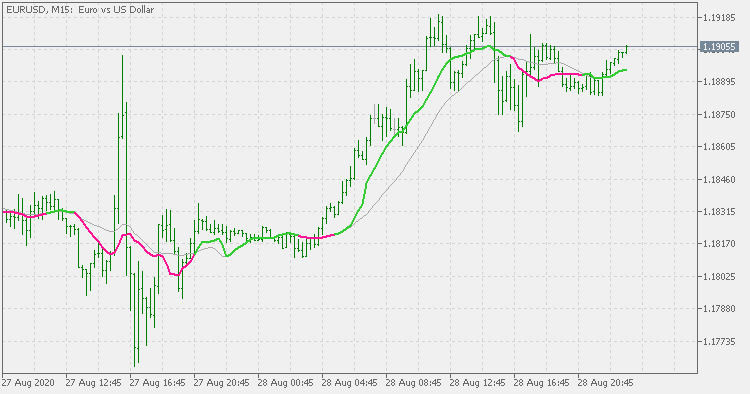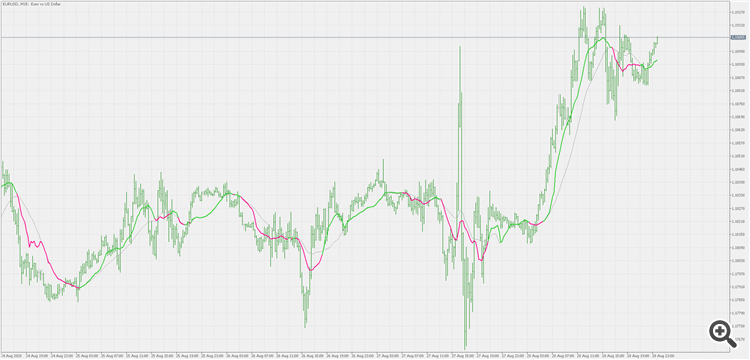당사 팬 페이지에 가입하십시오
- 조회수:
- 19418
- 평가:
- 게시됨:
-
이 코드를 기반으로 한 로봇이나 지표가 필요하신가요? 프리랜스로 주문하세요 프리랜스로 이동
Basics :
Recommendations:One of the moving averages that is not often made adaptive is SMA (Simple Moving Average). The reason for that is that it is bound to bars values (unlike, for example EMA - that is used in numerous adaptive averages - that can use fractional periods too) and that makes the calculations a bit complicated and, in some cases the results are going to be "nervous" - they tend to changes slope in some periods very quickly.
That makes it a bit difficult to use it too : using the slope of such an average as a criteria for a trading decision would lead to "change of mind" on almost every bar - and that is not what anybody would like to do. This version makes a possible solution for that : since adaptive SMA is "faster" than the "regular" SMA, you can use the crosses of adaptive to regular SMA as a criteria for trend. Results seem to be acceptable
- The indicator allows you to use :
- classical slope change for color change
- cross of tho SMAs (the adaptive and the "regular") as a criteria for color change - as described above
- You can use color change of the adaptive SMA as a signal for trend change

 Easy Neural Network
Easy Neural Network
A native implementation of neural networks in pure MQL, bundled with an easy to use interface, with easy support of saving and loading of the network configurations after training.
 Bridge - structural design pattern
Bridge - structural design pattern
Decouple an abstraction from its implementation so that the two can vary independently
 ATR Stop Loss
ATR Stop Loss
ATR Stop Loss indicator
 Composite - structural design pattern
Composite - structural design pattern
Create an object tree which represents part-whole hierarchies, so that the client would treat objects and compositions of objects uniformly.
